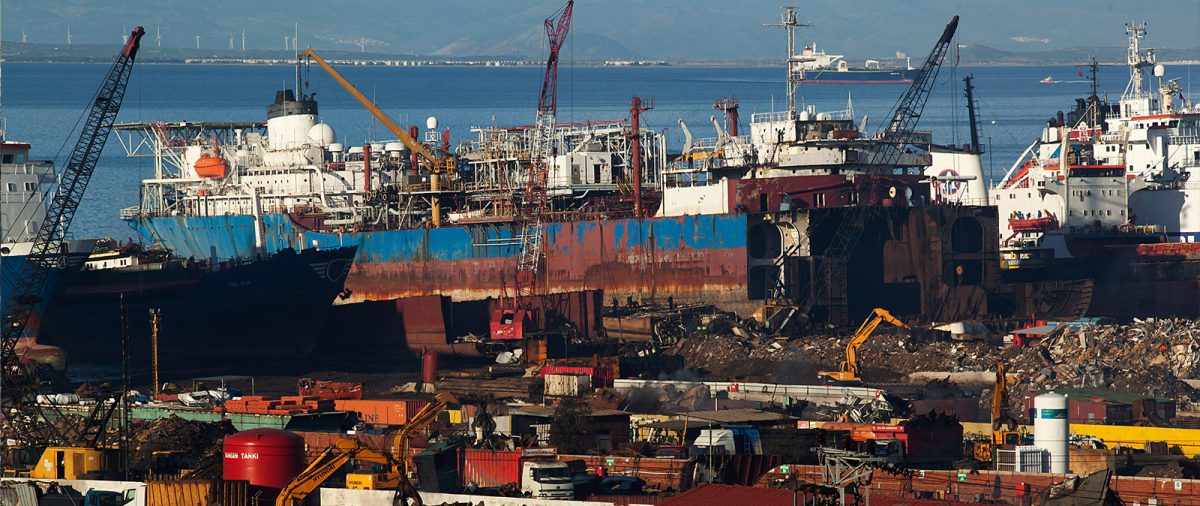Ship recycling offers a possibility to reuse significant parts and equipment of the ship. Steel can be recycled to produce new steel, reducing the energy required for processing by two-thirds. Copper cables and aluminium may also be recycled in similar ways. This way we reuse natural resources.
Ship Recycling
Although the principles of ship recycling may be sound, the working practices and environmental standards in some yards often leave much to be desired. In these situations, ship recycling can be dangerous. With the adoption of the Hong Kong International Convention for the Safe and Environmentally Sound Recycling of Ships in May 2009, steps towards quality improvements in ship recycling have been taken.
Ship recycling activities are undertaken in dry dock conditions (unlike the vast majority of ship breakers yards) and the use of the large dry dock maximises the safety and integrity of the environment.
Basel Convention
The Basel Convention on the Control of Transboundary Movements of Hazardous Wastes and their Disposal is relevant for ship dismantling, as a ship that is sent for scrapping usually contains hazardous materials and may be (hazardous) waste as well as a ship under other international conventions. The Conferences of the Parties (COPs) of the Basel Convention have adopted Technical Guidelines and various decisions on this issue, and the Secretariat has collected information on ship dismantling.
We operate a specialist division for:
- The demolition of marine structures
- Underwater installations
- Jetties, quays
- Dock facilities
- Bridge abutments and foundations
- Wreak removal
Action by Non-governmental Organisations
- Greenpeace
- Basel Action Network (BAN)
- Robin des Bois (NGO involved in maritime security and environment) publishes regular information bulletins and annual surveys on shipbreaking in French and English, see: www.robindesbois.org (page on “démolition des navires”).
Enviro Metal Trading
Ensures that the operation of ship recycling facilities in a safe and environmentally sound manner; and the establishment of an appropriate enforcement mechanism for ship recycling (certification / reporting).
Worldwide, between 200 and 600 large end-of-life ships are broken up and recycled every year, as their steel, other scrap metal and equipment constitute valuable raw materials. Most of this ship dismantling nowadays takes place in South Asia, on tidal beaches and under primitive conditions. While the industry provides thousands of jobs for migrant workers, a lack of environmental protection and safety measures leads to high accident rates, health risks and extensive pollution of coastal areas. Older ships contain many hazardous materials, including asbestos, polychlorinated biphenyls (PCBs), tributyl tin and large quantities of oils and oil sludge.


